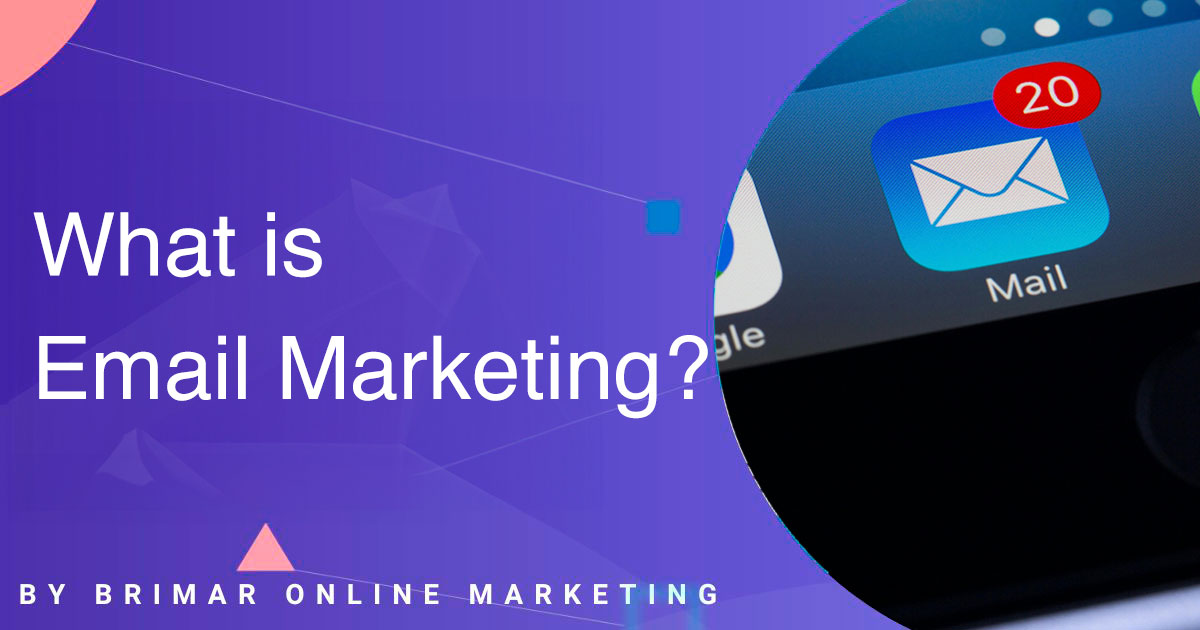
Introduction
Brief Overview of Email Marketing
Email marketing is a powerful tool that allows businesses to connect with their audience directly through email.
It involves sending messages, promotions, updates, or any other relevant information to a targeted list of recipients via email.
It’s a cost-effective and efficient way to reach customers, build brand awareness, and drive sales.
Importance of Email Marketing for Businesses
Email marketing plays a crucial role in the overall marketing strategy of businesses.
It provides a direct line of communication with customers, allowing for personalized interactions and targeted messaging.
Additionally, email marketing can help businesses increase brand loyalty, drive website traffic, generate leads, and ultimately boost revenue.
What is Email Marketing?
Definition and Basic Concept
At its core, email marketing involves sending commercial messages to a group of people via email.
These messages can include promotional content, product updates, newsletters, event invitations, and more.
The goal is to engage with customers, nurture leads, and drive conversions through targeted communication.
Evolution of Email Marketing
Email marketing has come a long way since its inception.
What started as simple text-based messages has evolved into sophisticated campaigns featuring personalized content, automation, and advanced analytics.
With the rise of digital marketing platforms and tools, businesses now have more options than ever to create and optimize their email marketing efforts.
Key Components of an Email Marketing Campaign
A successful email marketing campaign consists of several key components:
- Audience Segmentation: Dividing your email list into smaller segments based on demographics, behavior, or preferences allows for more targeted messaging and higher engagement.
- Compelling Content: Creating relevant and valuable content that resonates with your audience is essential for driving opens, clicks, and conversions. Whether it’s a promotional offer, educational resource, or entertaining newsletter, the content should provide value to the recipient.
- Engaging Design: Your emails’ visual appeal plays a significant role in capturing the recipient’s attention. Utilize eye-catching graphics, clear calls to action, and mobile-responsive layouts to enhance the overall user experience.
- Automation: Automating certain aspects of your email marketing, such as welcome emails, follow-ups, and drip campaigns, can save time and improve efficiency. By setting up triggers and workflows, you can deliver timely and relevant messages to your subscribers without manual intervention.
- Measurement and Analytics: Tracking key metrics such as open rates, click-through rates, conversion rates, and ROI allows you to evaluate the performance of your email campaigns and make data-driven decisions for optimization.
Do You Need to Attract More Customers?
Get more customers by taking advantage of our efficient digital marketing services. Our services include SEO, PPC Management, Web Design and Development, Social Media Marketing, Email Marketing, and more.
Benefits of Email Marketing
Cost-effectiveness
One of the most significant benefits of email marketing is its cost-effectiveness.
Compared to traditional marketing channels like print or television advertising, sending emails is relatively inexpensive.
Businesses can reach a large audience with minimal investment, making it an ideal option for small businesses or those with limited marketing budgets.
Targeted Audience Reach
Email marketing allows businesses to reach a highly targeted audience with tailored messages.
By segmenting your email list based on demographics, interests, or past interactions, you can deliver relevant and valuable content to each recipient.
This targeted approach increases the likelihood of engagement and conversion, ultimately driving better results for your campaigns.
High ROI (Return on Investment)
Email marketing consistently delivers a high return on investment (ROI) for businesses.
With its low cost and high potential for driving sales and revenue, email campaigns often yield impressive ROI compared to other marketing tactics.
By tracking metrics such as open rates, click-through rates, and conversions, businesses can measure the effectiveness of their email marketing efforts and optimize accordingly to maximize ROI.
Enhanced Customer Engagement and Retention
Email marketing fosters ongoing customer engagement, helping build stronger relationships and encourage repeat business.
Businesses can keep customers informed about new products, promotions, and company updates by regularly communicating via email.
Personalized and relevant content can enhance the overall customer experience, increasing satisfaction and loyalty over time.
How Email Marketing Works
Building an Email List
The first step in email marketing is building a quality email list of subscribers who have opted in to receive communications from your business.
This can be done through various channels, such as website sign-up forms, social media campaigns, or in-store promotions.
Before adding them to your email list, you should obtain permission from individuals to ensure compliance with anti-spam laws and maintain a positive sender reputation.
Crafting Compelling Email Content
Once you have an email list, the next step is crafting compelling email content that resonates with your audience.
This content can take many forms, including promotional offers, product updates, educational resources, or curated newsletters.
The key is to provide value to your subscribers and encourage them to take action, whether it’s making a purchase, visiting your website, or sharing the email with others.
Segmentation and Personalization
Segmentation and personalization are critical components of effective email marketing.
By dividing your email list into smaller segments based on factors such as demographics, purchase history, or engagement level, you can deliver more targeted and relevant content to each group of subscribers.
Personalization techniques, such as using the recipient’s name or referencing past interactions, can further enhance the effectiveness of your email campaigns and increase engagement.
Sending and Tracking Email Campaigns
Once your email content is ready, it’s time to send out your campaigns using an email marketing platform or service provider.
These tools allow you to schedule emails for optimal delivery times, track performance metrics in real-time, and automate follow-up sequences based on recipient actions.
By monitoring key metrics like open rates, click-through rates, and conversions, you can gain valuable insights into the success of your campaigns and make data-driven decisions for future optimization.
Types of Email Marketing Campaigns
Promotional Emails
Promotional emails are designed to promote specific products, services, or offers to your audience.
They typically include compelling offers, discounts, or announcements to drive conversions and sales.
Whether it’s a seasonal sale, new product launch, or exclusive deal, promotional emails effectively generate interest and drive action from your subscribers.
Welcome Emails
Welcome emails are the first impression your brand makes on new subscribers.
They serve to greet new subscribers, introduce them to your brand, and set expectations for future communication.
Welcome emails often include a warm welcome message, information about your brand or products, and possibly a special offer or incentive to encourage engagement and loyalty from the start.
Newsletter Emails
Newsletter emails are regular communications sent to your email subscribers to provide them with updates, news, and valuable content.
They can include various content, such as blog posts, industry insights, company updates, or curated resources.
Newsletter emails help to keep your audience informed, engaged, and connected with your brand over time.
Transactional Emails
Transactional emails are triggered by a specific action the recipient takes, such as making a purchase, completing a form, or resetting a password.
Examples include order confirmations, shipping notifications, account notifications, and password reset emails.
While primarily informational in nature, transactional emails also present an opportunity to reinforce your brand identity and provide additional value or offers to the recipient.
Best Practices for Successful Email Marketing
Creating Attention-Grabbing Subject Lines
Subject lines are the first thing recipients see when they receive your email, so making them attention-grabbing and compelling is crucial.
Keep them concise, clear, and relevant to the content of your email. Experiment with personalization, emojis, and urgency to increase open rates and capture the recipient’s interest.
Optimizing Email Design for Mobile Devices
With a growing number of users accessing emails on mobile devices, optimizing your email design for mobile responsiveness is essential.
Ensure your emails display correctly and are easily read on various screen sizes.
Use single-column layouts, larger fonts, and clickable buttons to enhance the mobile user experience and maximize engagement.
A/B Testing to Improve Performance
A/B testing, also known as split testing, involves experimenting with different elements of your email campaigns to determine what resonates best with your audience.
Test variations of subject lines, email content, CTAs, and send times to identify which combinations drive the highest open and click-through rates.
Use the insights gained from A/B testing to refine your email marketing strategy and improve performance over time.
Maintaining Email List Hygiene
Regularly cleaning and maintaining your email list ensures deliverability and engagement.
Remove inactive subscribers, correct invalid email addresses, and unsubscribe those who no longer wish to receive your emails.
Keeping your email list clean and up-to-date will improve deliverability rates, reduce spam complaints, and maintain a healthy sender reputation.
Common Email Marketing Mistakes to Avoid
Sending Too Many Emails
Bombarding your subscribers with too many emails can lead to email fatigue and higher unsubscribe rates.
It’s essential to strike a balance and only send emails when you have valuable content or offers to share.
Pay attention to frequency and timing to avoid overwhelming your audience.
Neglecting to Segment Your Audience
Failing to segment your email list can lead to generic messaging that doesn’t resonate with specific segments of your audience.
You can just take the time to segment your subscribers based on demographics, behavior, or preferences to deliver more targeted and personalized content.
This approach can significantly improve engagement and conversion rates.
Failing to Optimize for Mobile
With most emails now being opened on mobile devices, optimizing your email designs for mobile responsiveness is crucial.
Neglecting mobile optimization can result in poor user experience, low engagement, and missed opportunities.
Ensure your emails are mobile-friendly, with easily clickable buttons, legible fonts, and responsive layouts.
Overlooking Email Analytics
Failing to track and analyze email metrics means missing out on valuable insights that can inform your email marketing strategy.
Pay attention to key metrics such as open rates, click-through rates, conversion rates, and engagement levels.
Use this data to identify trends, uncover opportunities for improvement, and refine your email campaigns for better results.
Conclusion
The Benefits and Importance of Email Marketing
Email marketing remains a powerful tool for businesses to connect with their audience, drive engagement, and boost sales.
From its cost-effectiveness to its ability to deliver targeted messaging, email marketing offers numerous benefits that can help businesses thrive in today’s digital landscape.
Why Businesses should Leverage Email Marketing for Growth
As businesses continue to navigate the competitive online landscape, leveraging email marketing can be a game-changer for driving growth and staying ahead of the curve.
By implementing best practices and avoiding common mistakes, businesses can harness the power of email marketing to reach their goals and achieve long-term success.
Explore Email Marketing Services Offered by Brimar Online Marketing
Ready to take your email marketing efforts to the next level?
Explore the email marketing services offered by Brimar Online Marketing.
Whether you’re looking to build your email list, craft compelling campaigns, or optimize your email strategy, our team of experts is here to help you achieve your objectives and maximize your ROI.
Contact us today to learn more!
Our Digital Marketing Services Have Helped Our Clients Increase Their Revenue!
“I highly recommend Brimar if your looking to grow your online business. You will be satisfied with the high level of expertise and high quality of services. It has helped my business grow by leaps and bounds.”
CEO



